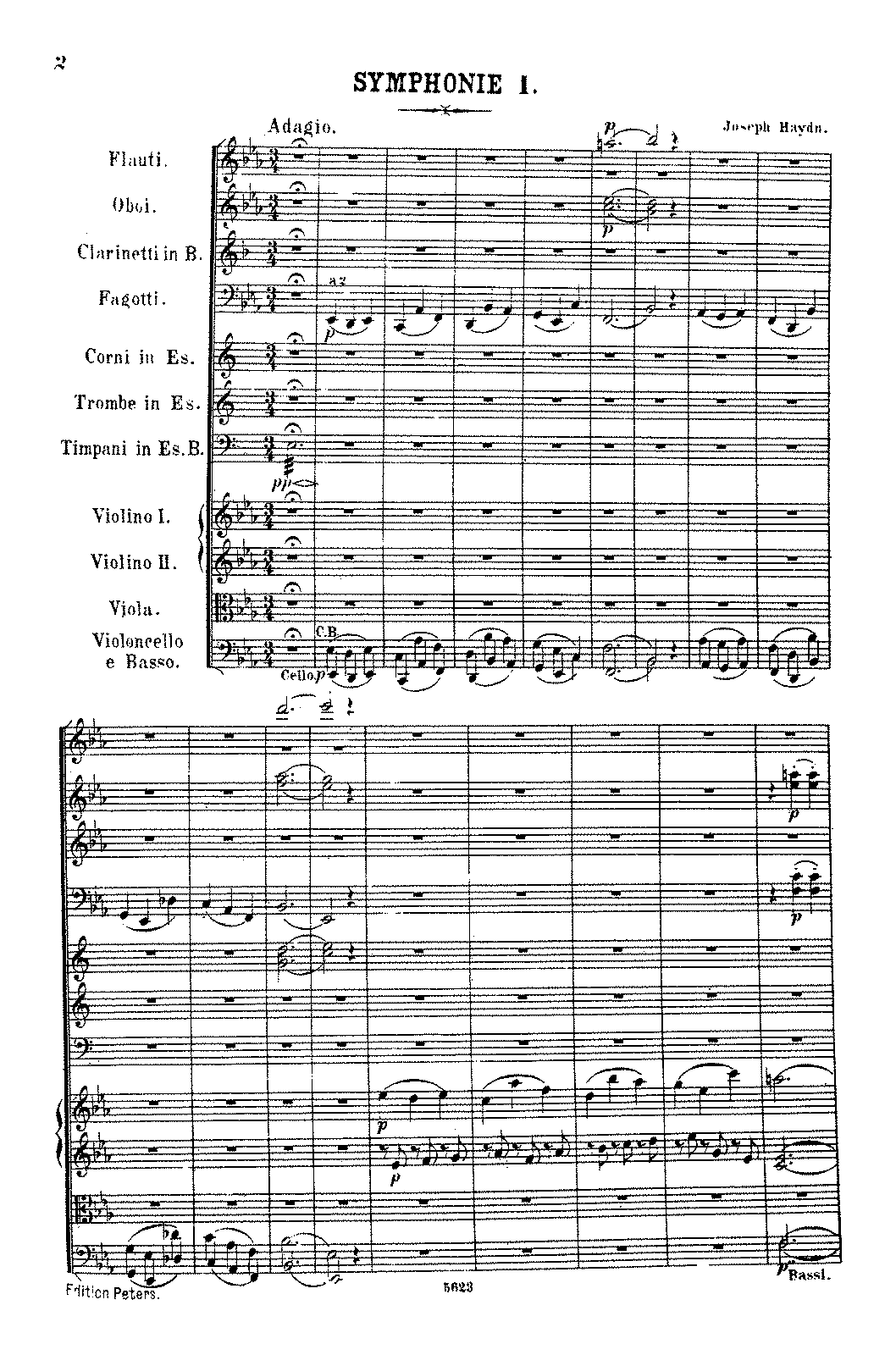The First Pages

Your study of the score should start at the very beginning. An abundance of information can be found on the first pages that might be vital for the rest of the learning process.
Scanning the First Pages
(allow around 20 minutes for this activity)
Look at the title page and first page of the Haydn scores in Figure 3.5 and Example 3.7. These are from different copies of the same work. Make a note of all the information you can see.
Discussion
In the Figure 3.5 there is no musical notation, but I can see the name of the composer, the publisher, the place of publication, information that the score was compiled from individual instrumental parts, that it was engraved. The name of the publisher, Pleyel is important as he was a pianist and subsequently publisher who died in 1831. With very little effort I can find out that this is probably the earliest printed score of this symphony. The musical notation in Example 3.7 gives me information about the instrumentation and the transpositions I will need to bear in mind as I read the score. The score calls for horns and trumpets in Es (key of E-flat), but there is no key signature for either instrument.
The sort of information that is generally easy to find on the first page and/or the title page of a score might include:
- Composer
- Editor or arranger
- Title
- Opus number (and perhaps a date of writing or of publication)
- Dedication
- Instrumentation
- Transpositions required
This is helpful information to build the context for what follows. It is well worth the time spent to assemble all of the data available to understand what the composer has created. One might later use this information to research the time period in which it was written, the composer, and available information concerning the work. All of which are required in order to make decisions about how to perform the music.
Conductors must be able to recognise the different types of publication they are likely to come across. Music written since around 1900, whether for choir, band, or orchestra, is mostly presented without any significant changes introduced by publishers. However, publications of older repertoire are likely to have had some editorial intervention. It is important to understand the differences between the terms “transcription,” “edition,” and “arrangement.” This information is usually included somewhere in the score, either on the title page or on the first page, just under the name of the composer, where it may say something like, “Edited by…” or “Arranged by…”.
